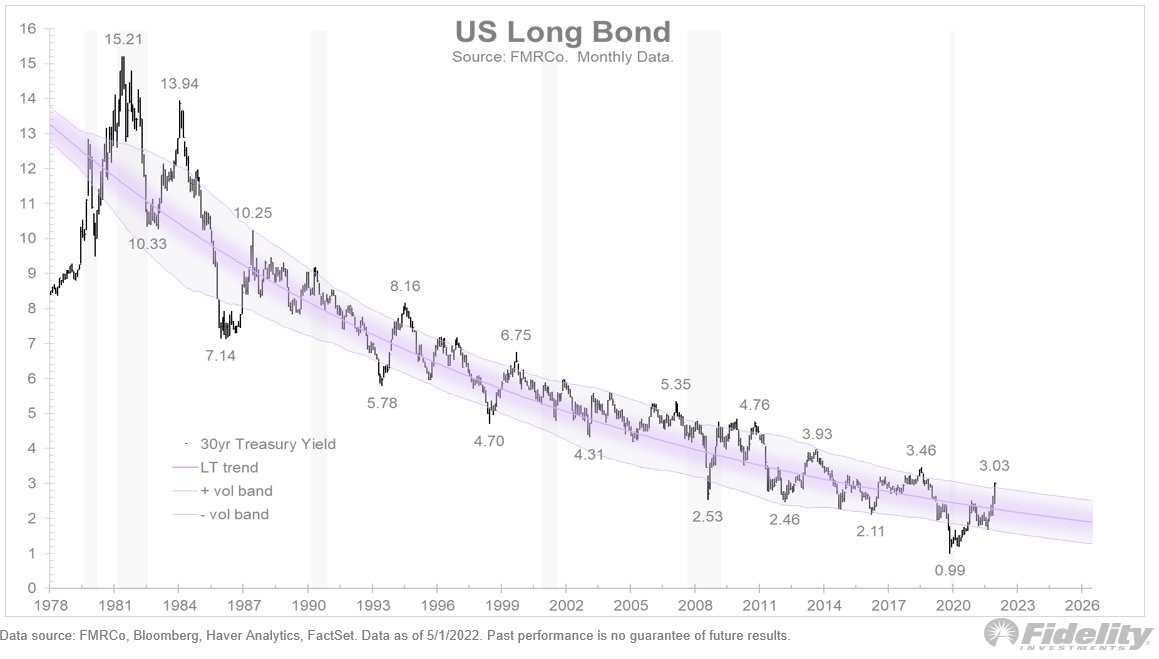Much ado about rates (and just how much pain is left for bond investors?)

Even if you are not the type that reads the Wall Street Journal every day, interest rates have become downright buzzworthy. It is not often that a simple economic concept enters the lexicon of cocktail parties and casual office water cooler talk alike.
Let’s start with the facts. Thirty year mortgage rates have gone from sub-3% to above 5% in the past year (FRED). The Consumer Price Index increased 8.5% for the 12-month period ending March 31, 2022 (BLS). And the 10-Year Treasury yield is up to 2.99% after bottoming in August 2020 at 0.52% (FRED). If this seems like unprecedented movement in historically “boring” economic measures, that’s because it is. And it is causing record drawdowns in bonds.
Data for the Bloomberg Barclays US Aggregate Bond Index (most common proxy for the US bond market) goes back to 1976. Not only are bonds are down 11.1% since their peak in August 2020, but we are currently in the midst of the longest drawdown in history. The following chart from Charlie Bilello summarizes any US bond market drawdown greater that 3% on record:

To add to the problem for investors, the S&P 500 is also down almost 13% from its peak on January 4, 2022 (Bloomberg). Historically, the bright side for diversified investors has been strong performance from bonds in the face of declining stock prices. In fact, there has yet to be a year where both the S&P 500 and Barclays Aggregate Index were both down in the same calendar year, which makes the market decline so far this year sting even more:

So what happens next? Well, for starters the market is currently pricing in about 12 rate hikes (3.00-3.25%) from the Federal Reserves between now and the end of the year (CME). But remember, the market does not simply wait for Jerome Powell to reprice assets. The declines in both the stock and bond markets so far this year reflect these expectations, along with other surprises like high inflation.
But if we assume that getting real interest rates positive again is the endgame for the Fed, things are not as bleak as they were even a few weeks ago. By comparing the current yield on a 5-Year Treasury against expected inflation over the next 5 years, we can see the two beginning to converge once again.

With inflation expectations starting wane (as indicated by the blue line), yields (red line) do not need to increase much higher from here to be beating inflation again (as it was before the beginning of the pandemic.) In fact, if inflation continues taper, yields may not even need to go higher at all.
And if we couple that with the longer term trends in bonds, it is indeed possible that interest rates may even be hitting local highs at these levels, as seen in the graph below from Jurrien Timmer at Fidelity (Twitter).

So as tempting as it may seem, investors do have some reasons to think twice before reducing allocation to bonds in their portfolio.
